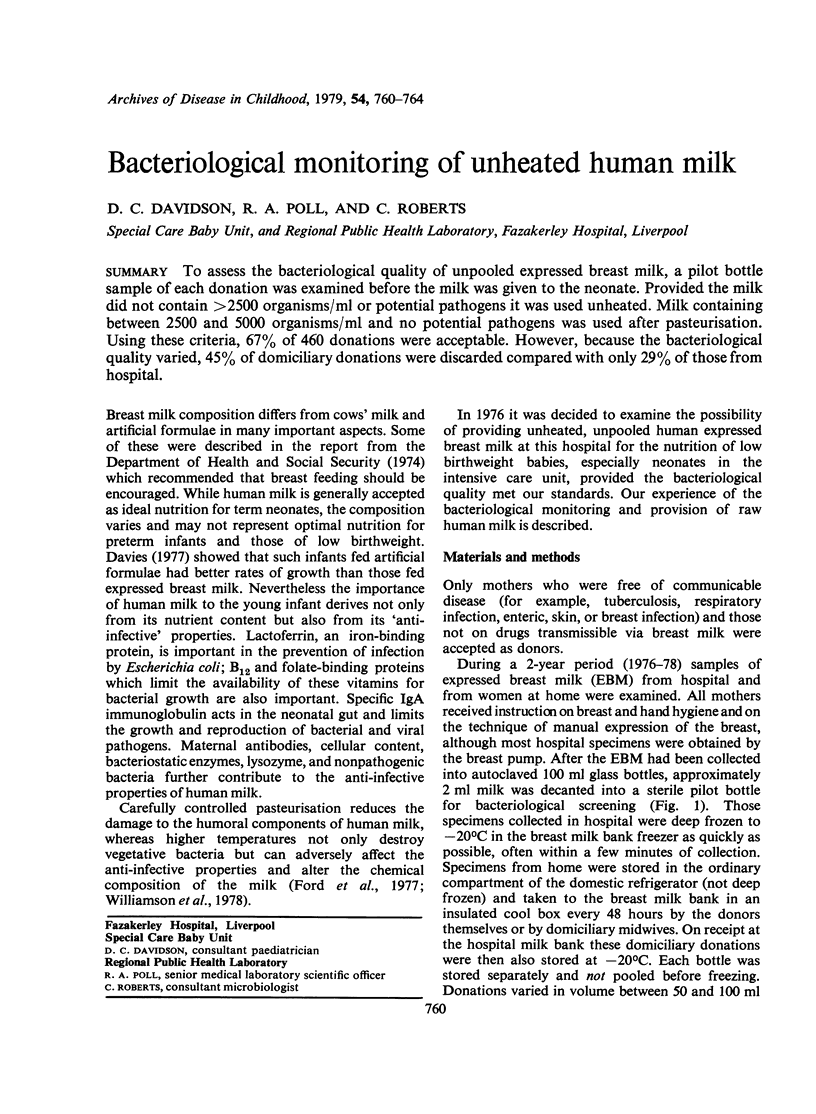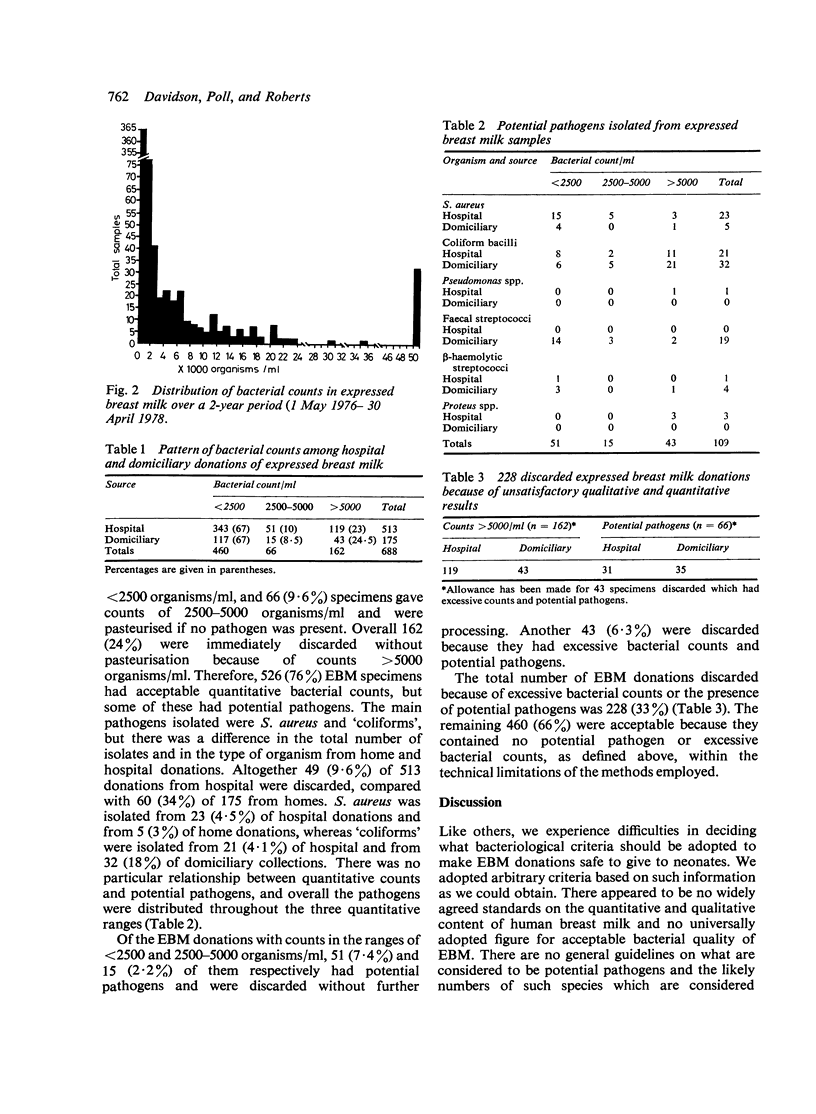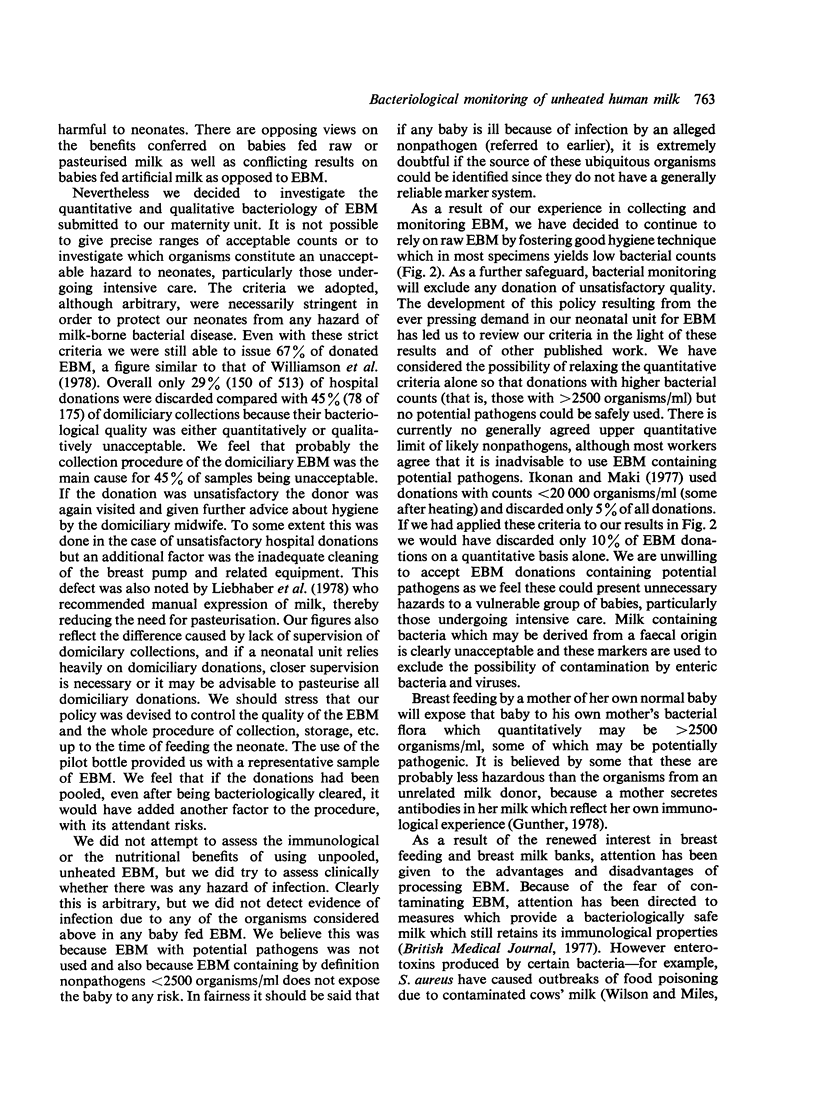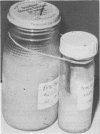Abstract
To assess the bacteriological quality of unpooled expressed breast milk, a pilot bottle sample of each donation was examined before the milk was given to the neonate. Provided the milk did not contain greater than 2500 organisms/ml or potential pathogens it was used unheated. Milk containing between 2500 and 5000 organisms/ml and no potential pathogens was used after pasteurisation. Using these criteria, 67% of 460 donations were acceptable. However, because the bacteriological quality varied, 45% of domiciliary donations were discarded compared with only 29% of those from hospital.
Full text
PDF




Images in this article
Selected References
These references are in PubMed. This may not be the complete list of references from this article.
- Beer A. E., Billingham R. E. Immunologic benefits and hazards of milk in maternal-perinatal relationship. Ann Intern Med. 1975 Dec;83(6):865–871. doi: 10.7326/0003-4819-83-6-865. [DOI] [PubMed] [Google Scholar]
- Davies D. P. Adequacy of expressed breast milk for early growth of preterm infants. Arch Dis Child. 1977 Apr;52(4):296–301. doi: 10.1136/adc.52.4.296. [DOI] [PMC free article] [PubMed] [Google Scholar]
- Evans T. J., Ryley H. C., Neale L. M., Dodge J. A., Lewarne V. M. Effect of storage and heat on antimicrobial proteins in human milk. Arch Dis Child. 1978 Mar;53(3):239–241. doi: 10.1136/adc.53.3.239. [DOI] [PMC free article] [PubMed] [Google Scholar]
- Ford J. E., Law B. A., Marshall V. M., Reiter B. Influence of the heat treatment of human milk on some of its protective constituents. J Pediatr. 1977 Jan;90(1):29–35. doi: 10.1016/s0022-3476(77)80759-2. [DOI] [PubMed] [Google Scholar]
- HEYNDRICKX G. V. Investigations on the enzymes in human milk. Ann Paediatr. 1962;198:356–362. [PubMed] [Google Scholar]
- Ikonen R. S., Maki K. Heating human milk. Br Med J. 1977 Aug 6;2(6083):386–387. doi: 10.1136/bmj.2.6083.386-c. [DOI] [PMC free article] [PubMed] [Google Scholar]
- Liebhaber M., Lewiston N. J., Asquith M. T., Olds-Arroyo L., Sunshine P. Alterations of lymphocytes and of antibody content of human milk after processing. J Pediatr. 1977 Dec;91(6):897–900. doi: 10.1016/s0022-3476(77)80885-8. [DOI] [PubMed] [Google Scholar]
- Liebhaber M., Lewiston N. J., Asquith M. T., Sunshine P. Comparison of bacterial contamination with two methods of human milk collection. J Pediatr. 1978 Feb;92(2):236–237. doi: 10.1016/s0022-3476(78)80014-6. [DOI] [PubMed] [Google Scholar]
- Lucas A., Goddard P., Baum J. D. Raw or pasteurised human milk? Br Med J. 1978 Mar 25;1(6115):781–781. doi: 10.1136/bmj.1.6115.781. [DOI] [PMC free article] [PubMed] [Google Scholar]
- Pitt J. Breast milk leukocytes. Pediatrics. 1976 Nov;58(5):769–770. [PubMed] [Google Scholar]
- Raptopoulou-Gigi M., Marwick K., McClelland D. B. Antimicrobial proteins in sterilised human milk. Br Med J. 1977 Jan 1;1(6052):12–14. doi: 10.1136/bmj.1.6052.12. [DOI] [PMC free article] [PubMed] [Google Scholar]
- Williamson S., Finucane E., Ellis H., Gamsu H. R. Effect of heat treatment of human milk on absorption of nitrogen, fat, sodium, calcium, and phosphorus by preterm infants. Arch Dis Child. 1978 Jul;53(7):555–563. doi: 10.1136/adc.53.7.555. [DOI] [PMC free article] [PubMed] [Google Scholar]



